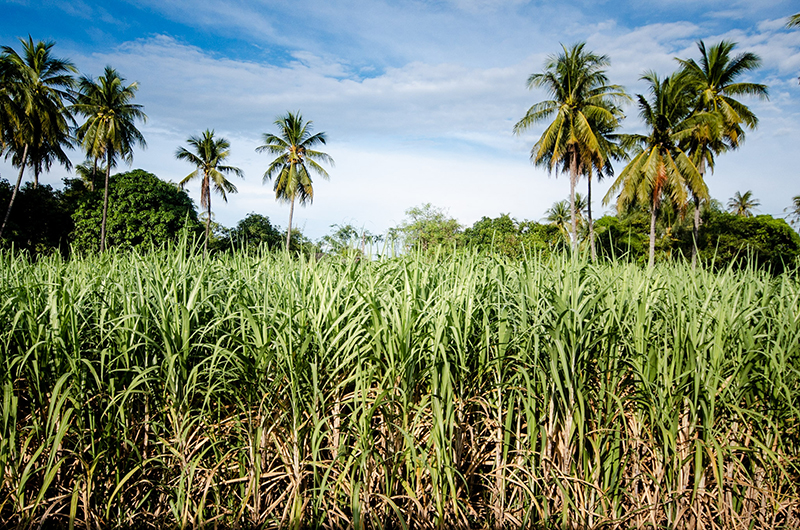21st December 2023

Taking science-backed climate action is more crucial than ever. To keep global warming below 1.5°C, all sectors need to cut their greenhouse gas emissions by 50% by 2030 and achieve net-zero emissions by 2050.
This urgency is especially clear in the Forest, Land, and Agriculture (FLAG) sector, responsible for approximately 23% of global greenhouse gas emissions. This sector is also increasingly feeling the effects of climate change, such as lower yields, health risks to workers due to heat, and financial losses.
For companies operating in agricultural sectors, like sugarcane, navigating existing frameworks and guidelines and taking effective steps to reduce emissions can be challenging.
In this piece, we explore FLAG emissions, why addressing them matters, and how sugarcane producers and buyers can take action using a tool designed specifically for this industry.
What are FLAG emissions?
FLAG emissions cover a wide range of greenhouse gas emissions from activities in Forests, Land, and Agriculture sectors. They occur from cradle to farm gate – which means any activity that happens on-farm, as well as upstream activities like the manufacture of inputs such as fertilisers.
The Science Based Targets initiative (SBTi) framework splits FLAG emissions into two major categories:
- Land use change (LUC) emissions come from the conversion of land, for instance deforestation.
- Land management emissions (or non-LUC) cover all other emissions, such as those that come from on-farm energy use for machinery or the application of fertilisers.
Anything “beyond the farm gate”, including transporting harvested sugarcane to the mill, should be covered in main scope 1, 2 and 3 targets and isn’t classified as FLAG. More insights on the sources of GHG emissions in sugarcane can be found here.
FLAG targets can also account for carbon removals as agricultural commodities, including sugarcane, have the potential to sequester carbon in soil, through the adoption of agricultural practices that contribute to the health of the soil, or through emerging technologies such as biochar (a type of carbon-rich charcoal that can be added to soil, locking up carbon while improving soil conditions).

Why address FLAG emissions?
Addressing FLAG emissions for every agricultural commodity is critical. Sugarcane production, which emits more than 400 million tonnes of CO2 equivalent per year, is no exception.
The Science-Based Targets initiative (SBTi) has introduced FLAG targets and guidance to enable companies to set science-based standards for various commodities, including beef, corn, soy, palm oil and timber.
This fills an important gap, since deforestation and other land-related impacts represent a significant part of many businesses’ climate footprint. Land-based sectors can also make a big contribution to tackling climate change by removing carbon dioxide from the atmosphere – for example by increasing the amount of carbon stored in the soil.
Thousands of companies worldwide have committed to reducing their greenhouse gas emissions in line with science. Doing so in a transparent and methodical way is crucial.
For consumer goods manufacturers, who source a wide array of ingredients, being able to measure their emissions and setting targets across multiple commodities using a single approach can make this process smoother. That is what the FLAG methodology can help with.
Using the SBTi guidance, Bonsucro has stepped in and designed a pathway and target-setting tool specifically for sugarcane.
Setting FLAG targets
As well as science-based targets, SBTi now requires participating companies to set a FLAG target if they operate in the food and beverage industry, or if FLAG emissions make up more than 20% of their total emissions. Bonsucro members, and companies that are sourcing from Bonsucro certified suppliers, may be setting FLAG targets for commodities including sugarcane.
To calculate the FLAG emissions reductions a company needs to make, SBTi offers two pathways:
- The FLAG sector pathway requires an absolute reduction of emissions regardless of growth. The overall science-based reduction demanded from the FLAG sector is 30.3% over 10 years, so companies using this pathway need to reduce their emissions by 3.03% each year. This pathway is recommended for demand-side companies whose FLAG emissions come within scope 3. A sector target-setting tool is available on SBTi’s website.
- Commodity-specific pathways are available for certain agricultural and forest commodities and are recommended for supply-side actors who produce these commodities, or where FLAG emissions come under scope 1. In these pathways, the annual reduction rate is based on emissions intensity or emissions per tonne produced – which can be more applicable to a company producing a growing volume.
Addressing FLAG emissions in sugarcane
In November 2023, Bonsucro launched the ClimateCane Tracker. This tool enables sugarcane producers and buyers to set a science-based target and a clear pathway for reducing emissions from sugarcane production.
It focuses specifically on sugarcane farming, which is responsible for more than three-quarters of emissions in the sector. It is designed to complement the Science-Based Targets initiative and to apply its guidance on Forest, Land and Agriculture (FLAG) emissions to sugarcane.
![]()
The ClimateCane Tracker is exclusively available for Bonsucro members for a year, before being made available to the whole sector.
“We need to mitigate without falling into greenwashing, and the ClimateCane Tracker will be a fundamental planning tool for the sector to quantify its GHG mitigation.”
UISA, a biorefinery in Brazil
The tool is primarily aimed at supply-side – farms and mills. Downstream companies can use it for sugarcane-specific targets, or use the SBTi FLAG sector pathway. These companies can also use it to promote emission reduction strategies to engage their suppliers, plan capacity-building projects, etc.
The ClimateCane Tracker’s accompanying guide, publicly available here, sets out how to set a FLAG target for sugarcane production.
If you are a Bonsucro member planning on setting your science-based and FLAG targets, visit the ClimateCane Tracker to get started.
If you’re interested in becoming a Bonsucro member and using the ClimateCane Tracker, please get in touch with our team at info@bonsucro.com





